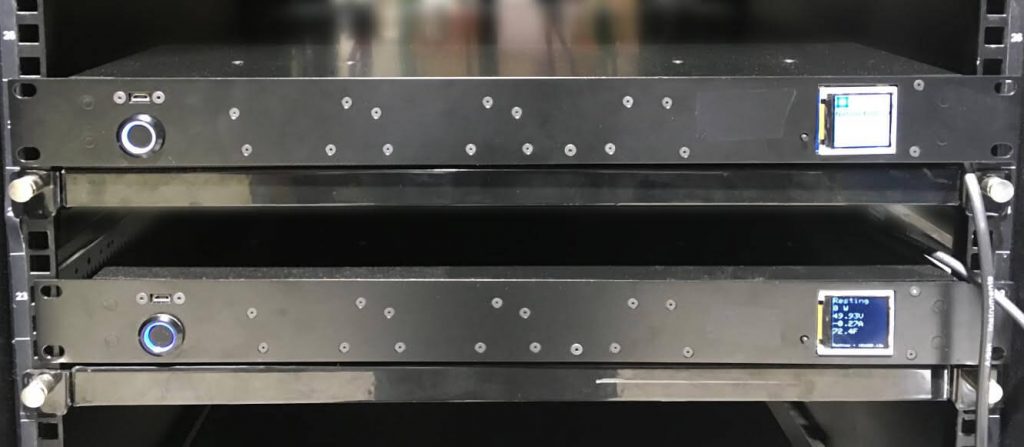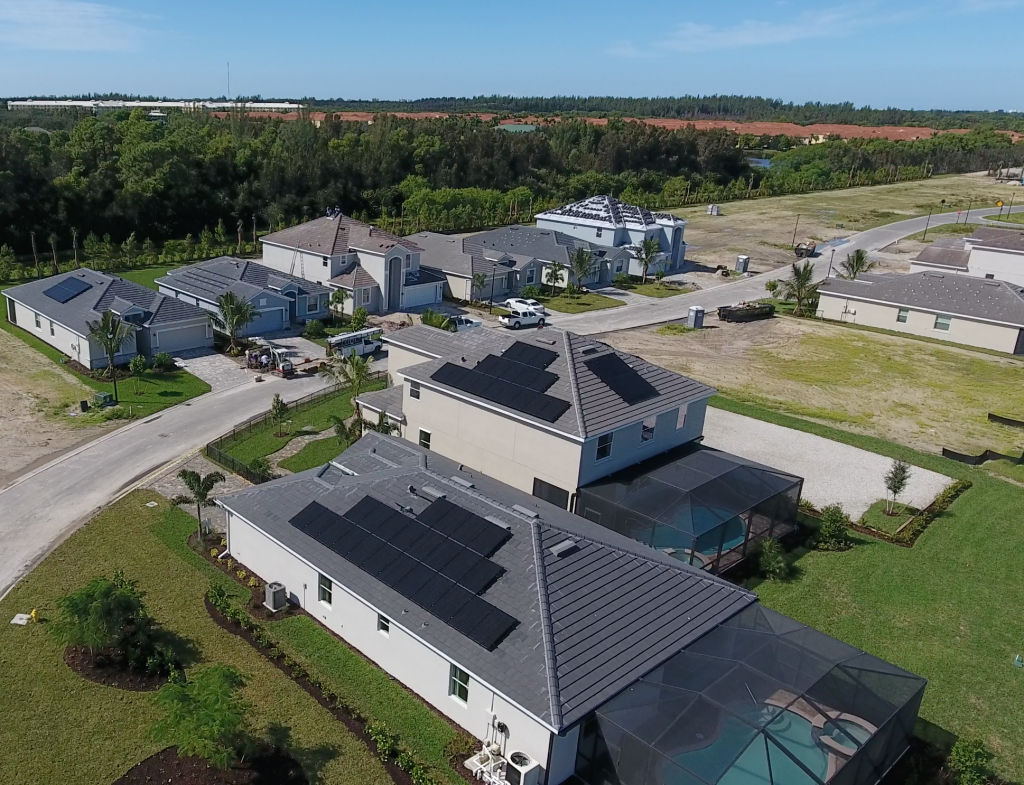To: The Impact Readers
Hello 🙃
Another week, another Impact Newsletter. Every week we seem to learn more about what can make us unique in the sea of information that is the internet and you – our readers have been ever so helpful with that. We appreciate you and thank you for supporting us in our mission to create open source information, research and tools for people joining or participating in the climate fight.
If you are interested in sharing a story or contributing to research we are working on reach out to our team by emailing us here or hitting us up on twitter!
In Your Inbox: Deconstructing the Sunrun & Vivint Acquisition; An analysis of Sodium Ion Batteries; Planting trees isn’t enough and A New BIG FEET PODCAST featuring Ravi Mikkelsen

Sunrun to acquire Vivint Solar for $3.2 Billion which would push Sunrun to 500,000 customers and more than 3 GW of assets on their books. The combined value of Sunrun + Vivint pushes it to an estimated $9.2 Billion based on the closing price July 6, 2020.
Sunrun is the leader, beating out Tesla and Vivint, in installing and selling residential solar systems in the US. Per Sunrun’s CEO Lynn Jurich – the acquisition seems to be part of a cost reduction & sales channel strategy Sunrun is looking for.
Residential Solar Sales Is Hard.
Sunrun is the biggest of the bunch, but the problems they face with 500,000 customers is the same as your local installer who does 10 or 20 installs a month. Acquiring customers for solar is the same as almost any blue collar profession – it takes a direct sales approach to achieve any form of scale. The cost to acquire a customer can range from $0.20/Watt to $0.40/Watt which for a 10 kW solar system means an installer has to spend at least $2,000 to acquire a customer.
Sunrun is an established brand at this point and has dominance in content marketing and their other online marketing efforts. Much like how Elon Musk uses his brand along with Tesla’s to try and reduce the cost of acquiring a lead through brand awarness, Sunrun does the same and has now bought the other big brand in the space to help further reduce customer acquisition costs.
Many companies ranging from Energy Sage to PickMySolar have tried different strategies in trimming this high cost and do it relatively well for the smaller installers. However, if Sunrun was making this acquisition on the idea of just another sales channel and potentially lower acquisition costs makes us excited in the short term, but terrified of the sustainability of Sunrun as a long term giant.
The Money Is In The Tech, Just Ask Utilities
What a typical solar sale breakdown looks like for a 3 kW (small) system:

This year has been huge for Energy Storage. Investors are pouring Millions into various new chemistries in the hopes of taking a piece of the global ESS market. Ideas that were being brought out of the lab in the early 2010s are finally seeing the light of day now that early pilots have been proven successful. One such company is Natron.
Natron Takes On Lithium, But Not Directly
With capital from ABB to Khosla Ventures – Natron is hoping their Persian Blue & Sodium Ion based battery can out perform Lithium in reactivity, used minerals and environmental risk. However, based on the niche market Natron is attempting to address it seems that they are really targeting projects where Lead Acid Batteries are still being utilized.
Data Center UPS, Electric Forklifts, Smart Grids and similar applications are Natron’s focuses based on information provided on their website. It makes sense, Natron’s batteries based on its Chemistry means it can be made cheap at scale, has fast charge and discharge capabilities similar to capacitors and can cycle tens of thousands of times before needing replacement.
A bit of history on Persian Blue Electrodes
Persian Blue sounds like a paint color you would find at Home Depot. In fact it was at one point used to create a blue pigment but as of recent in the last decade it has been discovered that it hold certain material properties that give it advantages as an electrode. The material is actually abundant and inexpensive while still providing a modest energy density with research claiming the energy density can be drastically enhanced.
Natron is one of the leaders in attempting to utilize Persian Blue Electrodes paired with Sodium-Ion Electrolytes to create meaningfully strong batteries.

Direct air capture, what is it good for? Why innovate when we already have technology that works?
The American Association for the Advancement of Science suggests that planting 1 trillion trees could have a massive effect on climate change. At the beginning of 2020, the Trump administration announced that the US will join 1t.org, which is an effort to plant and conserve 1 trillion trees by 2030.
In the US alone, there are 20 million of acres of land in need of reforestation. We would need to build new nurseries to plant roughly 6 billion trees. In this process, hundreds of thousands of jobs would be created. The National Alliance of Forest Owners released a report in 2019 that shows that 2.5 million people work in the forest sector, which accounts for 1.5% of US GDP.
However, a study published in Science Magazine brings to light the risks to rely on trees for long-term carbon storage. Even though forests can store large amount of carbon, trees are vulnerable to drought, wildfires, and disease, which have higher consequences due to the current climate crisis. The extreme case is that if global warming continues, forests could contribute to the problem, rather than be a solution.
It is clear that reforestation is not the only solution to mitigate climate change via direct air capture. For as much carbon trees store, there is the risk of natural disaster. Other direct air capture technologies are necessary, as well as other solutions that address the climate crisis. We will also need to implement policy changes, including decreasing the use of fossil fuels.

Net Zero Communities are developments or pilots that have been actively piloted in various parts of the world, but still today the value prop of buying a net zero home hasn’t been fully developed. What can we make from these projects and how does a Net Zero home play into the larger grid modernization and carbon reduction efforts we see in the world today.
The reason Net Zero homes haven’t taken off is because they tend to be significantly more expensive to build. This is because it requires a mix of microgrid load sharing technology and heavy weatherization of each home to reduce heating and cooling costs.
Weatherization Is The Biggest Takeaway
If you have spent more than a few months in the energy industry you probably know about heat pumps and the push to move people towards more efficient heating and cooling solutions. However, a lot of the savings in heating and cooling don’t come from upgrading to a new furnace or switching to a heat pump. In order to keep costs down in these Net Zero homes proper insulation and intelligent thermal design is taken into account to heat and cool each property based on where it is being built.
Imagine if a home, when being designed or upgraded would consider heating and cooling temperature patterns throughout the year to ensure as much natural heat would be used and vice versa. In turn reducing the overall load our HVAC systems would put on the grid.
Savings is Interesting but Not Enough
We see this with everything, a sale for a product you were planning to buy might help you choose one company over the other, but when it comes to buying a home the mass market isn’t looking at a potential $900/year savings on utilities that pushes them over the edge. A home is so much more than a utility bill, just ask any real estate agent.
Home First Grid Design
We looked at three net zero energy communities in the US that are going on to determine how offsetting what you consuming might help in our larger push towards grid modernization. Taking the approach of optimizing energy usage at the point of the home makes the most monetary sense from a utilities provider perspective. It provides more failure points for sure, but delivers higher quality service. Software can help manage or reduce the number of faults as well.
If you are interested here are the three net zero communities we looked at:
Ravi Mikkelsen joins us on Big Feet to share how switching to the right bank can actually accelerate our move to sustainable energy & resources across the board. Hope you love this episode of Big Feet! You can listen on spotify and other popular podcasting apps by checking out the show notes on our website.
Learn more and get the transcript here.
Develop your market map of up-and-coming climate startups and market opportunities by subscribing to our weekly newsletter for free.